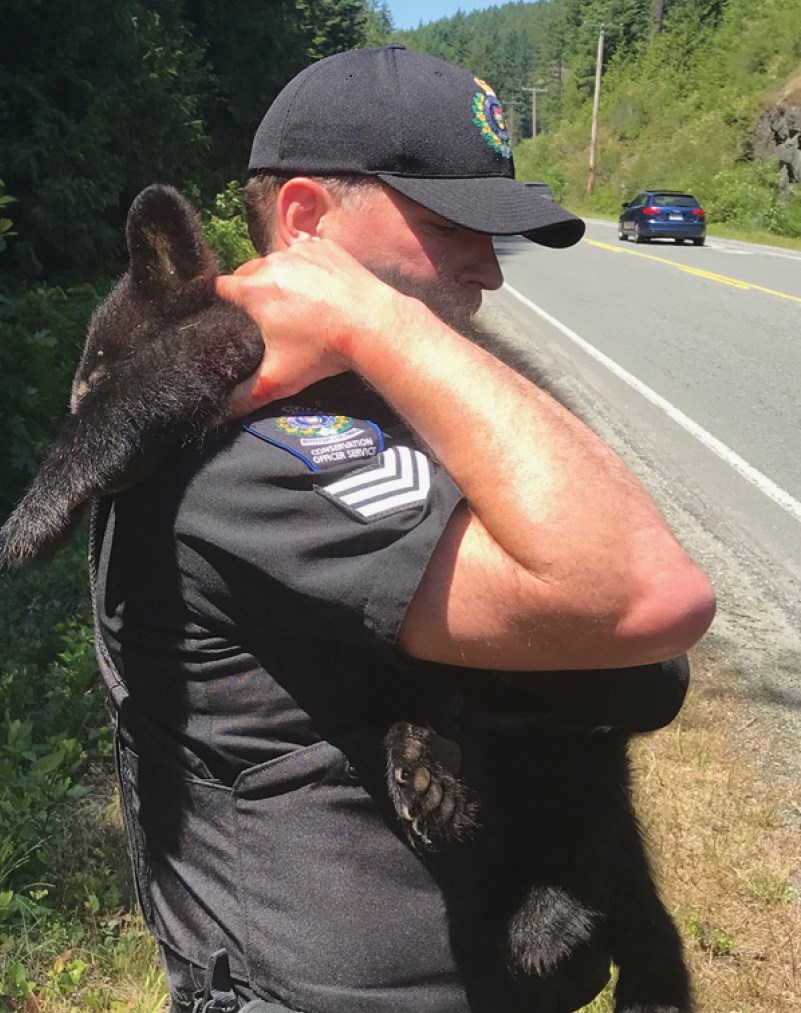Two bears are being returned to the Halfmoon Bay area this week after spending nearly a year at a wildlife sanctuary in Langley.
The siblings were rescued from the side of Highway 101 near Trout Lake last June after their mother was critically injured in a motor vehicle accident. Conservation Officer Service (COS) officers destroyed the bear at the scene. They also attempted to capture a third cub that had escaped high up a tree. The sow and cubs were underweight at the time of the incident.
The two 15-month-old orphan bears are now “quite substantial” in size, weighing between 54 and 73 kilograms (120-160 lbs.) and were expected to be released Thursday. They are tagged and will be monitored.
“It’s probably a good reminder to the residents in and around Halfmoon Bay to be extra, extra diligent with these new cubs,” said Sechelt-based COS Sgt. Dean Miller. “It’s a critical time for these bears to adapt and integrate back into wild food supplies.”
The bears will likely experience “a pretty large caloric drop,” once they are released, but Miller is hoping this spring’s strong skunk cabbage crop and a prolific salmonberry season will be enough to keep them away from human food sources.
Releasing bears at least once a year is typical, said Miller, who also expects to release a bear that was captured inside a Powell River grocery store last December.
The number of bear complaints on the Sunshine Coast this spring have been fairly typical, too, said Miller, with 19 black bear reports made in April. Last year calls were up significantly, with 152 reports made between April and June.
Last spring saw higher than average temperatures, which Miller said could be a cause of stress for bears since it reduces their food supply. This spring’s temperate weather has helped keep food supplies more abundant.
Keeping attractants safely out of reach remains an issue, though.
One “highly habituated” bear has caused problems in Madeira Park, for example, where it has been ripping siding off locked outbuildings such as garages. That bear is being monitored and COS officers have been warning property owners to remove or secure attractants. “We found that one particular business has not followed our direction so we’re going to take a bit more of an enforcement stance on that business,” Miller said.
A bear found in distress in upper Roberts Creek was destroyed in early April. The COS believes it had consumed fertilizer or another form of poison.
The COS has also been conducting evening garbage patrols to check whether people are leaving garbage out the night before scheduled curbside pickup days. Several warnings were given to people in West Sechelt.
Last year an attractant audit was conducted on the Sunshine Coast and across B.C. to crack down on bear conflicts. Helping this year with public education about attractants will be Wildsafe BC community coordinator Erin Heeney. She has been hired for this season and will b estarting the position on May 11.
Another coronavirus-related threat to bears has COS officers on alert. Miller said officers are expecting to be more vigilant about monitoring bear poaching, after Chinese officials reportedly endorsed the use of bear bile to treat COVID-19. “We haven’t seen that on the Coast yet, but we’re going to up our patrols,” he said.



